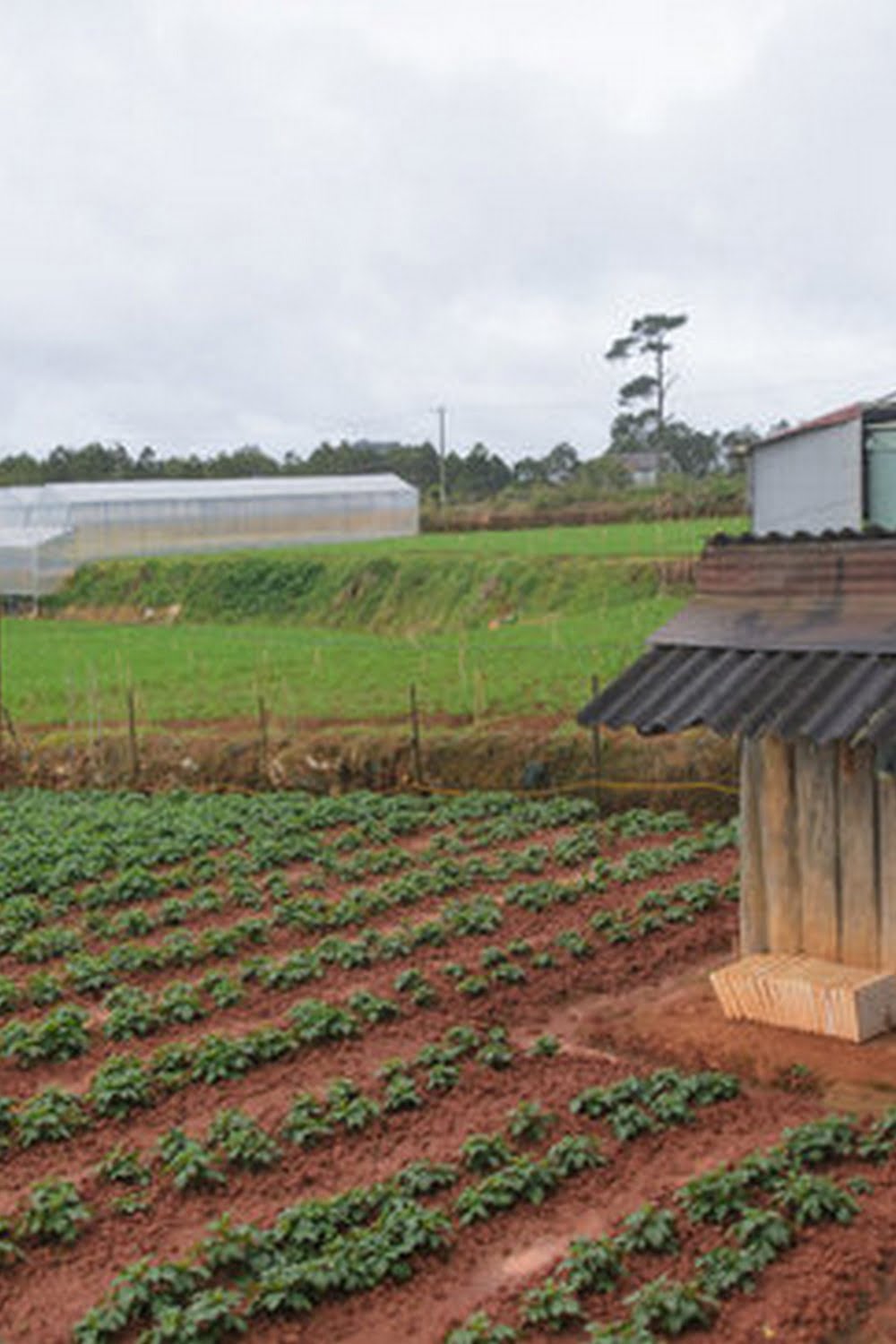When it comes to gardening, one popular and efficient method is gardening in raised beds for vegetables. Raised bed gardening involves planting in elevated soil beds rather than directly into the ground. This method offers several advantages such as improved soil quality, better drainage, increased accessibility, and easier weed control. Whether you are a novice gardener or a seasoned pro, raised bed gardening can be a rewarding experience.
One of the key benefits of gardening in raised beds is the ability to customize and control the soil environment, resulting in healthier plants with higher yields. By selecting the right location for your raised bed garden and properly building and preparing the beds, you can create an optimal growing environment for your vegetables. Additionally, raised beds offer better water retention and aeration compared to traditional ground planting.
Choosing the best location for your raised bed garden is crucial for success. Factors such as sunlight exposure, proximity to water sources, and soil quality should all be considered when planning your vegetable garden. By following proper guidelines for building and maintaining raised beds, selecting the right vegetables that thrive in this environment, and implementing effective planting and maintenance techniques, you can enjoy a bountiful harvest from your raised bed garden.
Benefits of Gardening in Raised Beds
Raised bed gardening offers numerous benefits to gardeners of all levels, making it a popular choice for growing vegetables. One of the main advantages of gardening in raised beds is the control it provides over the soil quality. By filling the raised beds with high-quality soil, you can ensure optimal growing conditions for your vegetables. This is especially beneficial if your native soil is poor or you’re dealing with issues like clay or sand.
In addition to better soil quality, raised bed gardens also offer improved drainage compared to traditional ground gardens. The elevated nature of raised beds allows excess water to drain more effectively, preventing waterlogged soil that can lead to root rot and other problems. This is particularly advantageous for vegetable plants that are susceptible to diseases caused by overly wet conditions.
Furthermore, raised beds provide a practical solution for gardeners with limited space or mobility issues. The elevated design makes it easier to access the plants for planting, weeding, and harvesting without having to bend over or kneel on the ground. This accessibility factor not only makes gardening more enjoyable but also encourages regular maintenance and care of the vegetable garden, leading to healthier and more productive plants in the long run.
| Benefits | Description |
|---|---|
| Better Soil Quality | Control over soil quality leads to optimal growing conditions. |
| Improved Drainage | Prevents waterlogged soil and related plant diseases. |
| Accessibility | Easier access for planting, weeding, and harvesting. |
Choosing the Right Location for Your Raised Bed Garden
When it comes to gardening in raised beds for vegetables, one of the key factors to consider is choosing the right location for your garden. The ideal location for a raised bed garden should receive at least 6-8 hours of sunlight each day, as most vegetables thrive in full sun. It is also important to choose a spot that has good drainage to prevent waterlogged soil, which can lead to root rot and other issues.
Another important consideration when selecting a location for your raised bed garden is proximity to a water source. Vegetables grown in raised beds often require more frequent watering compared to those planted directly in the ground, so having easy access to water is essential for successful gardening. Additionally, choosing a spot that is convenient for you to access on a regular basis will make tasks such as planting, weeding, and harvesting much easier and more enjoyable.
In addition to sunlight and water access, it is also beneficial to consider the proximity of your raised bed garden to your home or kitchen. Having your vegetable garden close by can make it more convenient for you to check on plants regularly, harvest fresh produce when needed, and tend to any maintenance tasks that may arise.
By taking these factors into account when choosing the location for your raised bed vegetable garden, you can set yourself up for a successful and enjoyable gardening experience.
Building and Preparing Your Raised Bed
Before filling your raised bed with soil, it’s essential to prepare the ground beneath it by removing any weeds or grass. This will help prevent unwanted growth from competing with your vegetable plants for nutrients and sunlight.
Once the ground is cleared, add a layer of landscape fabric or cardboard to further suppress weed growth before adding a mixture of topsoil, compost, and other amendments to create a nutrient-rich growing medium. Be sure to level out the soil in your raised bed to ensure even water distribution and proper root development for your vegetables.
After building and preparing your raised bed, consider installing a watering system such as drip irrigation to make watering more efficient and consistent. Raised beds can dry out more quickly than traditional gardens due to their elevated nature, so providing adequate moisture is essential for healthy plant growth.
Additionally, adding organic mulch around your plants can help retain moisture in the soil, suppress weed growth, and regulate soil temperature throughout the season. By properly building and preparing your raised bed for vegetable gardening, you can create an ideal environment for growing a bountiful harvest of fresh produce right in your own backyard.
Selecting the Best Vegetables for Raised Bed Gardening
When it comes to gardening in raised beds for vegetables, selecting the right vegetables plays a crucial role in the success of your garden. Raised beds provide a controlled environment for plant growth, making it essential to choose vegetables that thrive in this setup. Here are some top vegetable options that are well-suited for raised bed gardening:
- Tomatoes: Tomatoes are a popular choice for raised bed gardening due to their versatility and high yield. They require consistent watering and support for optimal growth.
- Peppers: Peppers, both sweet and hot varieties, also do well in raised beds. They prefer warm soil and plenty of sunlight, making them an ideal choice for this type of gardening.
- Carrots: Carrots are root vegetables that grow straight down into the soil, making them an excellent option for raised beds with loose, well-draining soil.
Other vegetable options that thrive in raised beds include lettuce, radishes, beans, and cucumbers. When selecting vegetables for your raised bed garden, consider factors such as the plant’s rooting depth, sunlight requirements, and compatibility with neighboring plants.
Ultimately, choosing the best vegetables for your raised bed garden will depend on your preferences and growing conditions. Experimenting with different varieties each season can help you determine which plants perform best in your specific setup. Remember to rotate crops annually to prevent nutrient depletion and reduce the risk of disease buildup in your raised beds. By selecting the right vegetables for your raised bed garden, you can ensure a bountiful harvest throughout the growing season.
Planting and Maintaining Your Vegetable Garden
Planning Your Planting Layout
Before you start planting your vegetables in raised beds, take some time to plan out your planting layout. Consider factors such as crop rotation, companion planting, and spacing requirements for each type of vegetable. By strategically planning your plant placement, you can maximize yields and minimize competition between plants.
Planting Techniques
When it comes to planting in raised beds, consider using techniques such as square foot gardening or vertical gardening to make the most of your limited space. Square foot gardening involves dividing the raised bed into square sections to maximize planting area, while vertical gardening utilizes trellises or stakes to grow vining plants vertically. These techniques not only optimize space but also help reduce weed growth and make harvesting easier.
Maintaining Your Vegetable Garden
Once your vegetables are planted, proper maintenance is crucial for ensuring healthy growth and bountiful harvests. Regular watering, mulching, weeding, and fertilizing are essential tasks for maintaining a productive raised bed garden. Monitor plant health regularly for signs of pests or diseases, and address any issues promptly to prevent them from spreading. With proper care and attention, your vegetable garden in raised beds will thrive throughout the growing season.
Tips for Success in Raised Bed Gardening
Raised bed gardening offers various benefits for growing vegetables, but success can depend on how well you maintain and care for your garden. Here are some tips to help you achieve the best results in gardening in raised beds for vegetables:
- Proper Soil Preparation: One of the key factors in successful raised bed gardening is ensuring that the soil is rich in nutrients and well-draining. A mix of compost, topsoil, and other organic matter can create the ideal growing environment for your vegetables.
- Adequate Watering: Raised beds often require more frequent watering than traditional gardens due to their elevated nature. Make sure to water deeply and regularly, especially during hot weather, to keep your plants healthy and thriving.
- Crop Rotation: To prevent nutrient depletion and disease buildup in your raised bed garden, it’s essential to practice crop rotation. Rotate your vegetable crops each season to maintain soil health and maximize yields.
In addition to these general tips, here are some more specific suggestions for success in gardening in raised beds:
- Use a good quality potting mix specifically designed for raised beds.
- Consider installing a drip irrigation system to ensure consistent moisture levels throughout your garden.
- Monitor for pests regularly and take appropriate action if necessary, such as using natural insecticides or physical barriers like netting.
By following these tips and staying proactive in caring for your raised bed vegetable garden, you can enjoy a bountiful harvest of fresh, organic produce right at your doorstep. With proper planning and maintenance, gardening in raised beds can be a rewarding and productive experience for any home gardener.
Common Challenges and How to Overcome Them in Raised Bed Vegetable Gardening
Gardening in raised beds for vegetables offers numerous benefits, but like any gardening method, it also comes with its own set of challenges. Being prepared and knowing how to overcome these obstacles will help ensure a successful harvest from your raised bed garden.
Pest Control
One common challenge faced by gardeners in raised beds is pest infestation. Pests such as aphids, caterpillars, and snails can wreak havoc on your vegetable plants if left unchecked. To combat this issue, consider using natural remedies like neem oil or insecticidal soap. Regularly inspecting your plants for signs of pests and promptly addressing any issues can also help prevent a full-blown infestation.
Weed Management
Weeds can quickly take over a raised bed garden if not properly managed. To keep weeds at bay, consider mulching around your vegetable plants to block out sunlight and prevent weed growth. Additionally, hand-weeding regularly is crucial to maintaining a weed-free garden bed. Avoid using chemical herbicides that could harm your vegetable plants and opt for organic weed control methods instead.
Soil Quality
Ensuring the quality of the soil in your raised beds is essential for healthy plant growth. Over time, the soil in raised beds can become compacted and depleted of nutrients. To overcome this challenge, regularly amend the soil with compost or organic fertilizers to replenish nutrients. Consider rotating crops each season to help prevent nutrient deficiencies and maintain soil health in your raised bed garden for years to come.
By being proactive in addressing these common challenges in raised bed vegetable gardening, you can create a thriving garden full of nutritious vegetables to enjoy throughout the growing season. With proper care and attention, you’ll be able to overcome any obstacles that come your way and reap the rewards of a bountiful harvest from your raised bed garden.
Harvesting and Enjoying the Fruits of Your Labor in a Raised Bed Garden
In conclusion, gardening in raised beds for vegetables can be a rewarding and fruitful experience for any gardener, whether you are a beginner or seasoned pro. The benefits of raised bed gardening, such as improved soil drainage, better weed control, and easier access for planting and maintenance, make it an ideal choice for growing a variety of vegetables.
By choosing the right location, building and preparing your raised bed properly, selecting the best vegetables to grow, and following proper planting and maintenance techniques, you can create a thriving vegetable garden in your own backyard.
When it comes to harvesting and enjoying the fruits of your labor in a raised bed garden, the satisfaction is truly unparalleled. As you watch your plants grow and produce delicious vegetables throughout the season, you will feel a sense of pride in knowing that you have nurtured these plants from seed to harvest.
Whether you are picking ripe tomatoes, crisp cucumbers, or vibrant bell peppers, there is nothing quite like the taste of freshly harvested vegetables from your own garden.
To ensure continued success in raised bed vegetable gardening, it is important to stay vigilant against common challenges such as pests, diseases, and nutrient deficiencies. By practicing good garden hygiene, monitoring plant health regularly, and addressing issues promptly as they arise, you can overcome these challenges and enjoy a bountiful harvest year after year.
So roll up your sleeves, get your hands dirty in the soil of your raised beds, and reap the rewards of all your hard work by indulging in the fresh flavors of homegrown vegetables straight from your garden. Happy gardening.
Frequently Asked Questions
What Vegetables Should Not Be Grown in a Raised Bed?
Some vegetables that should not be grown in raised beds are those with deep root systems, such as corn or larger varieties of squash. These crops need more space for their roots to spread out and thrive, which may be limited in a raised bed environment.
What Vegetables Grow Well in Raised Beds?
Many vegetables thrive in raised beds, including tomatoes, peppers, lettuce, spinach, radishes, and carrots. These crops benefit from the well-draining soil and better control over soil quality and watering that raised beds provide. They also tend to have shallower root systems that are well-suited for the limited space of a raised bed.
What Do You Put in the Bottom of a Raised Vegetable Bed?
To fill the bottom of a raised vegetable bed, it’s important to create good drainage while still providing nutrients for your plants. This can be achieved by layering materials like gravel or rocks at the bottom for drainage and then adding a mixture of compost, peat moss, and topsoil on top.
This combination creates fertile soil for plant roots to grow while preventing water-logging issues.

If you’re looking to get into vegetable gardening, or are just looking for some tips on how to make your current garden better, then you’ve come to the right place! My name is Ethel and I have been gardening for years. In this blog, I’m going to share with you some of my best tips on how to create a successful vegetable garden.





